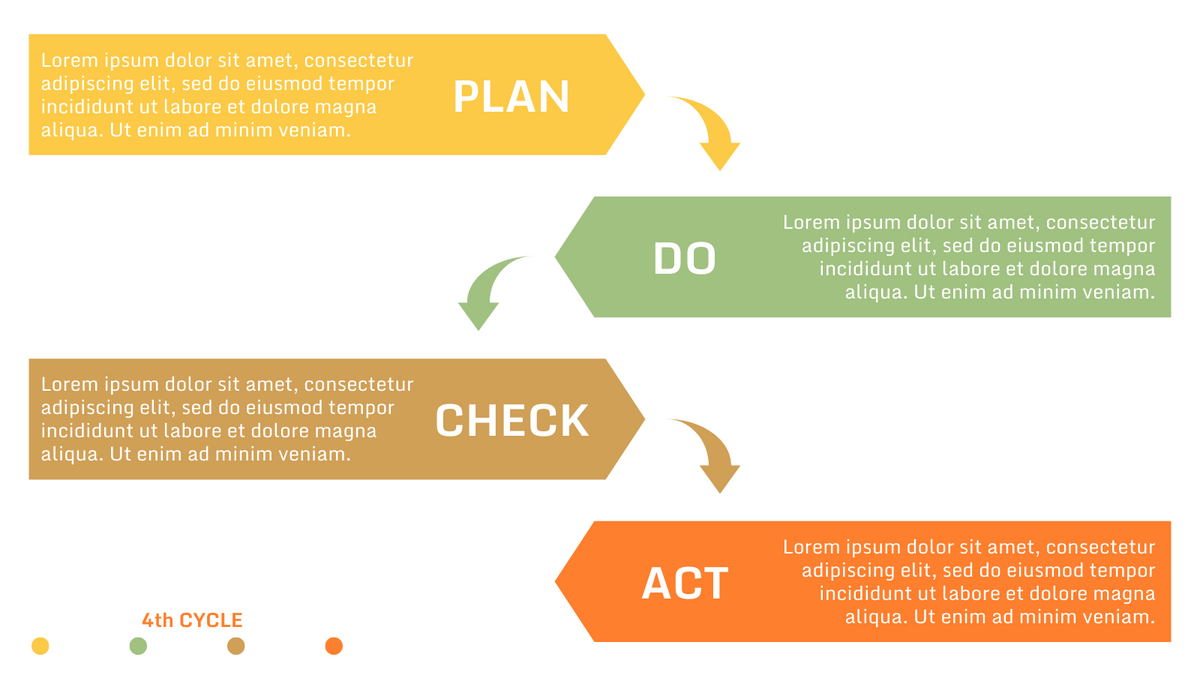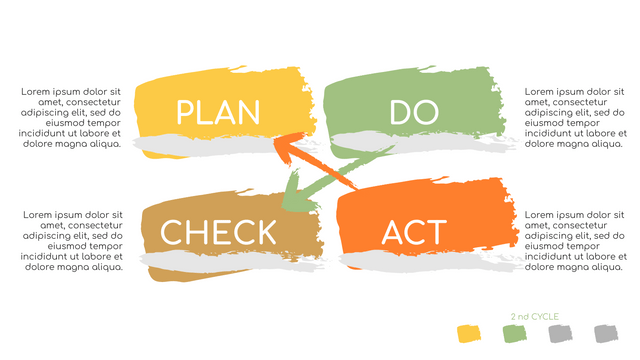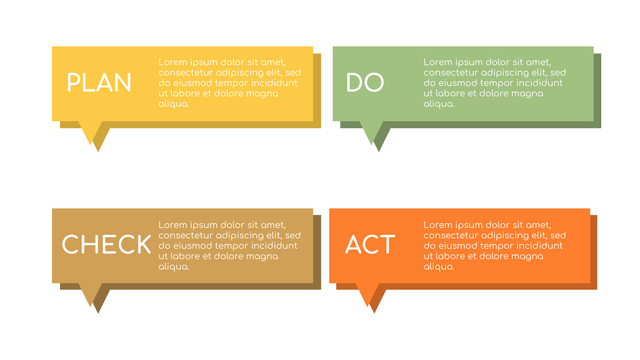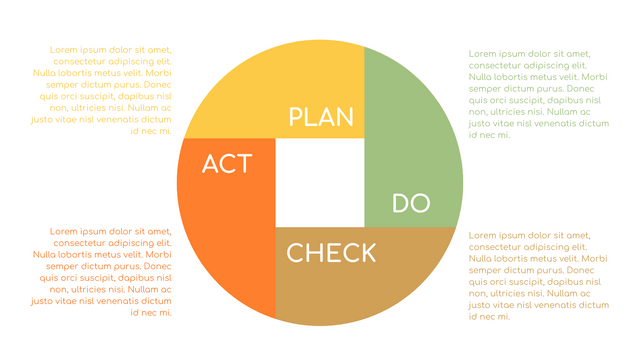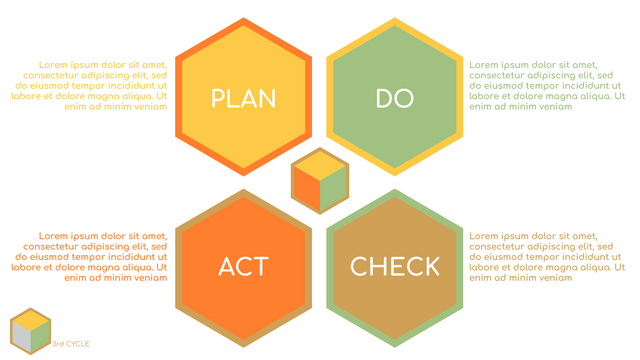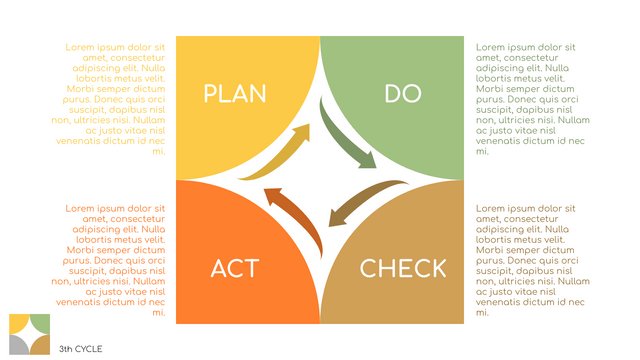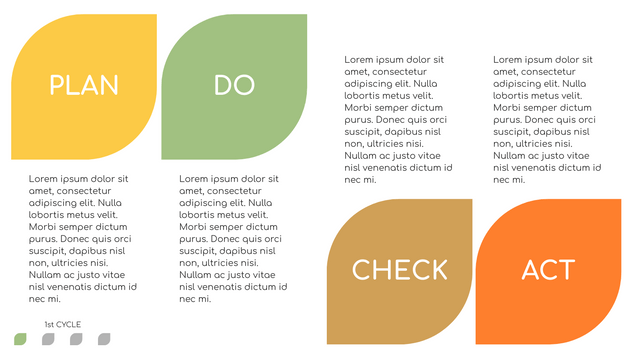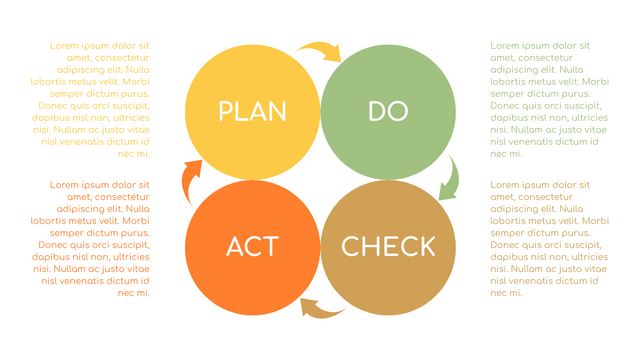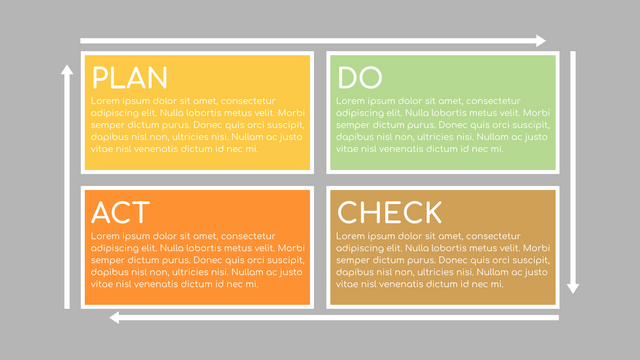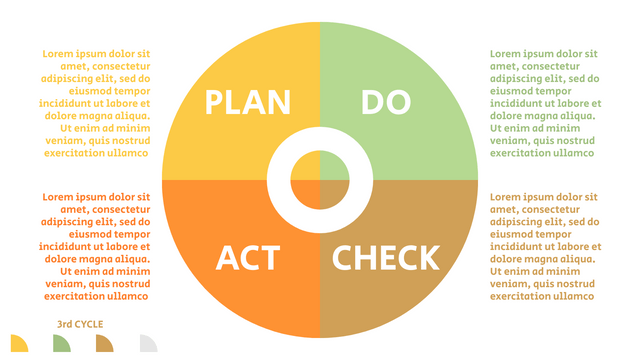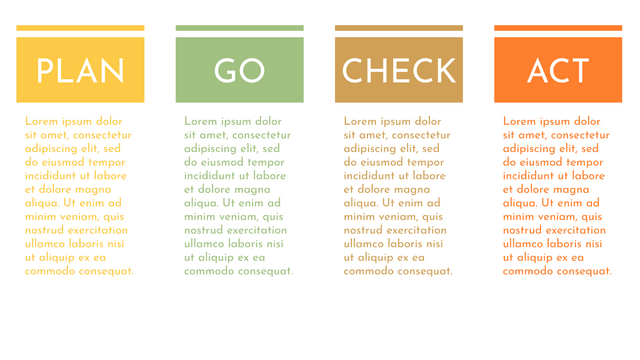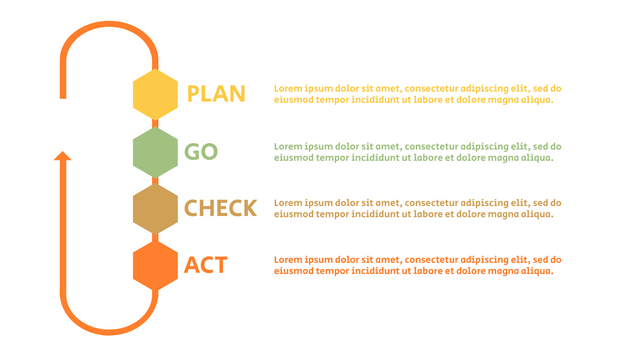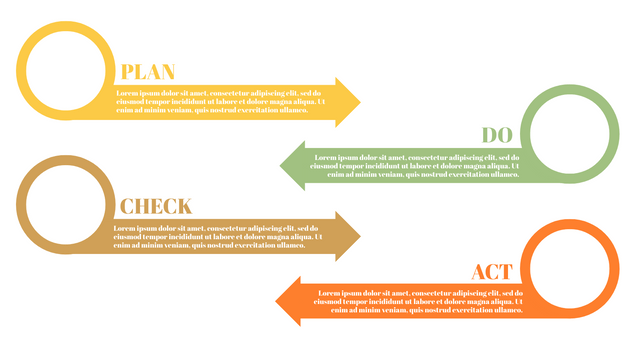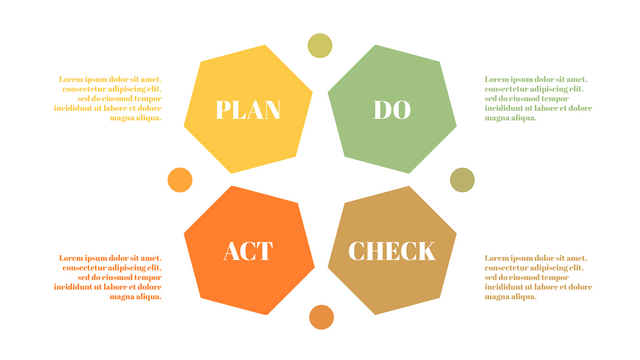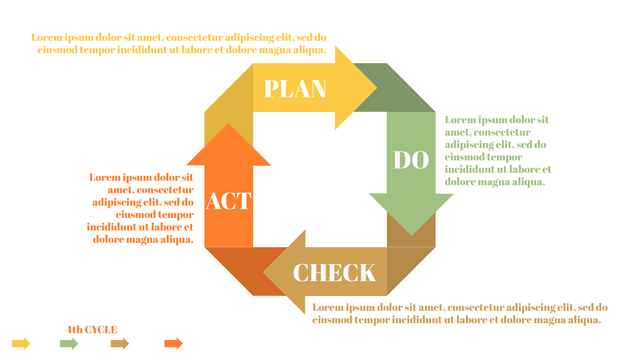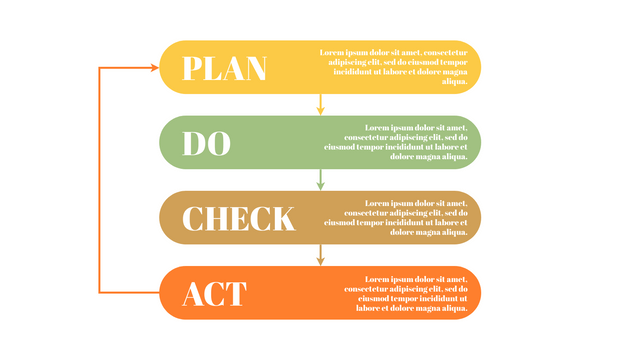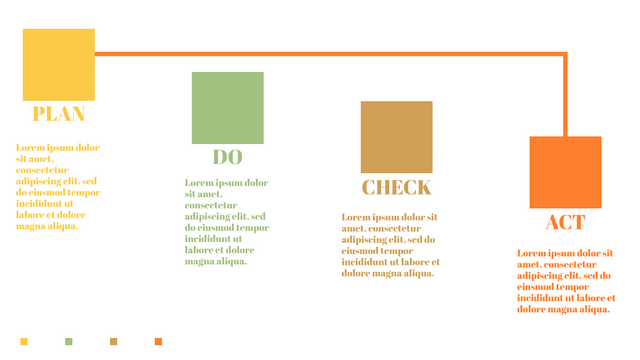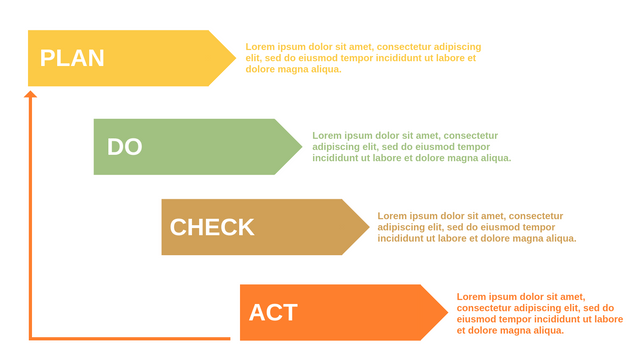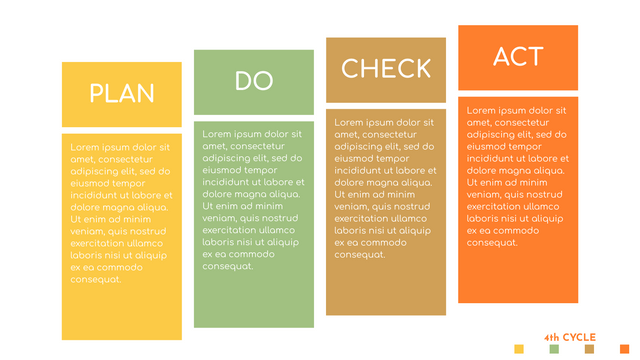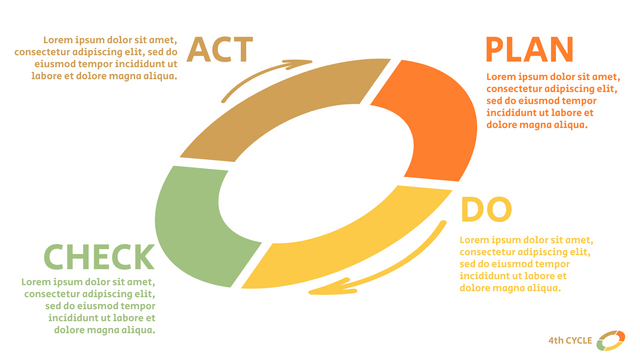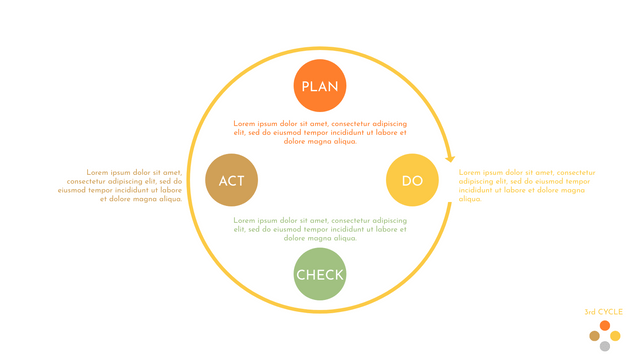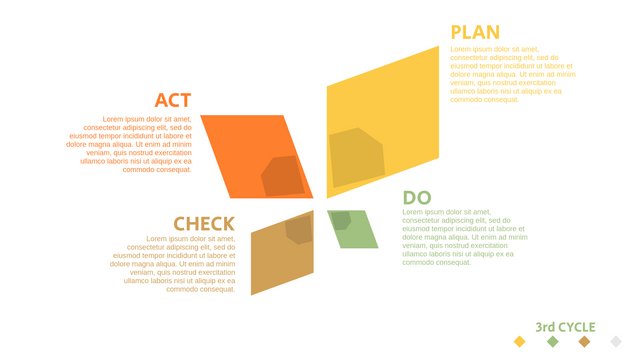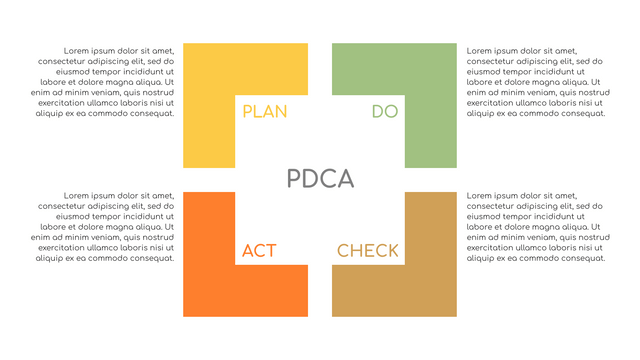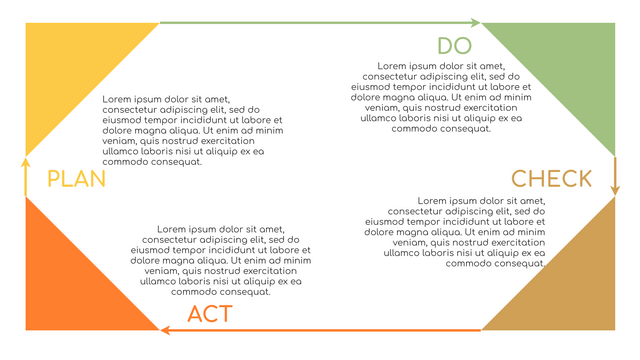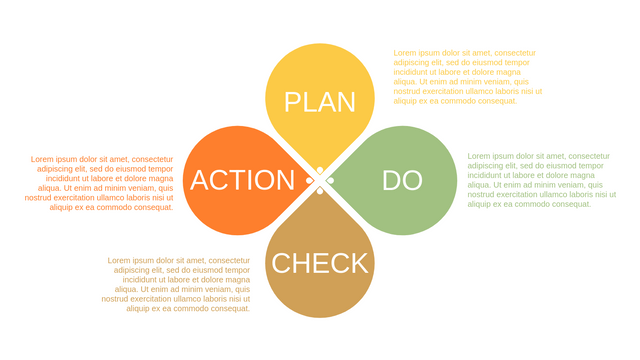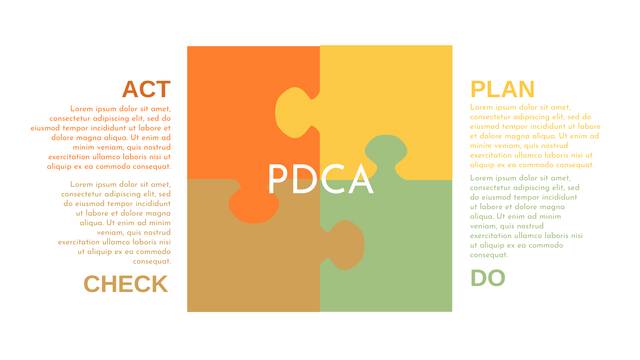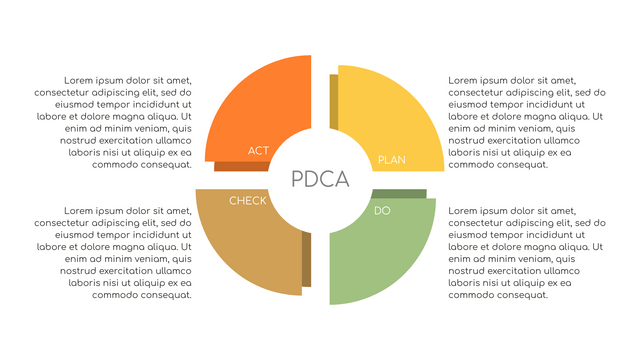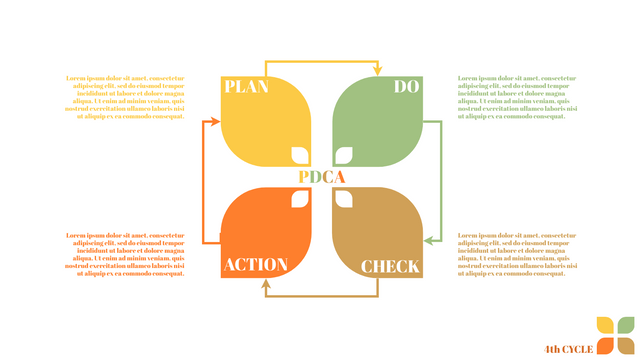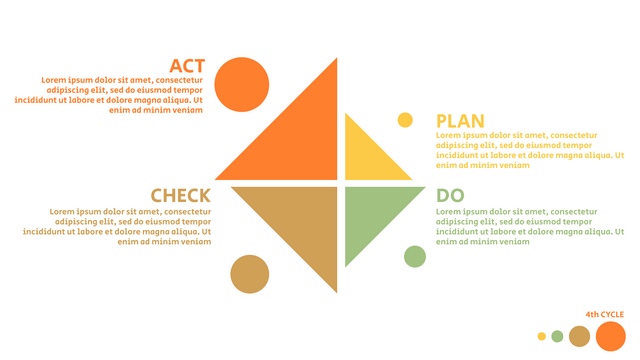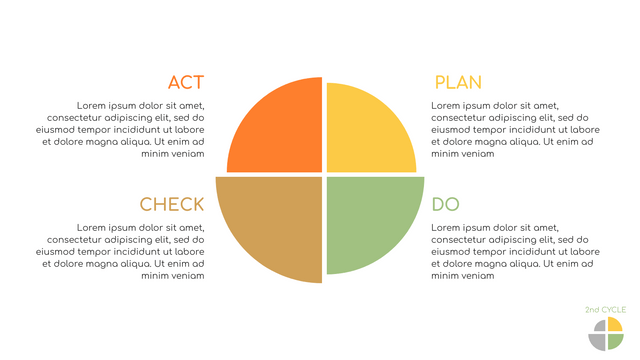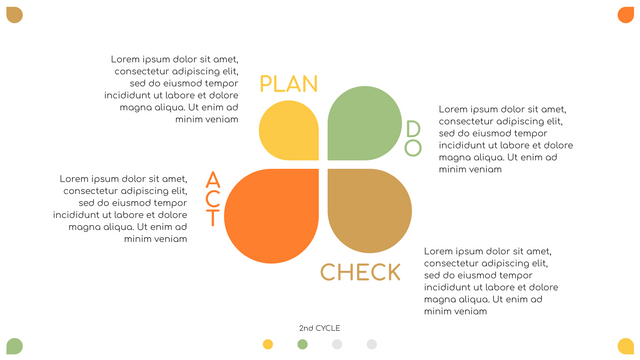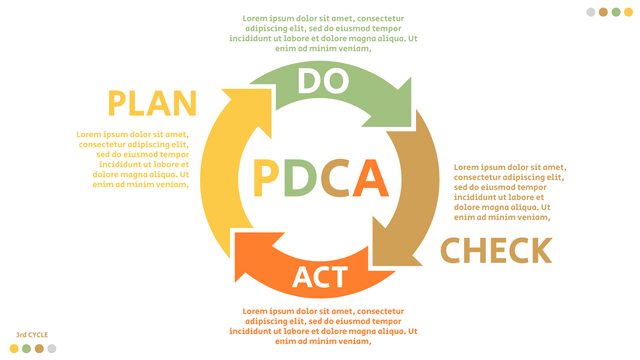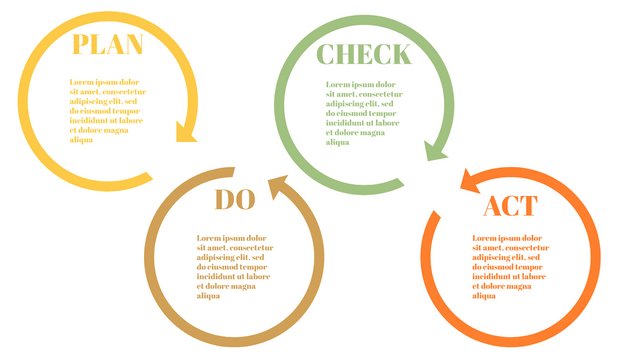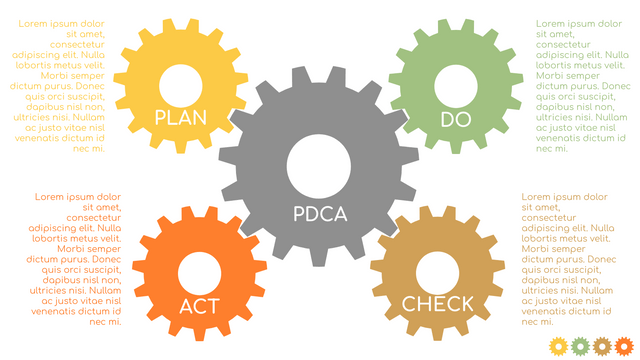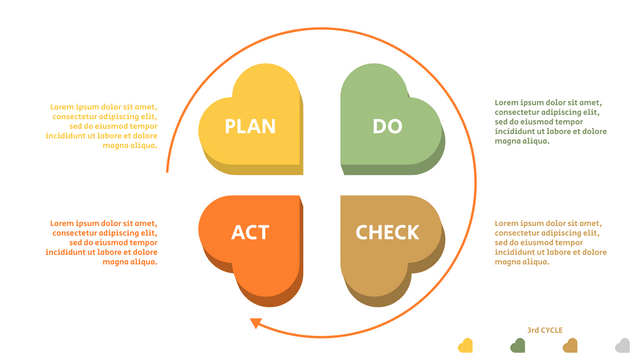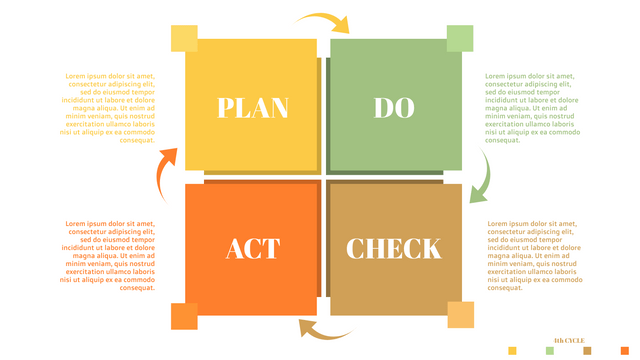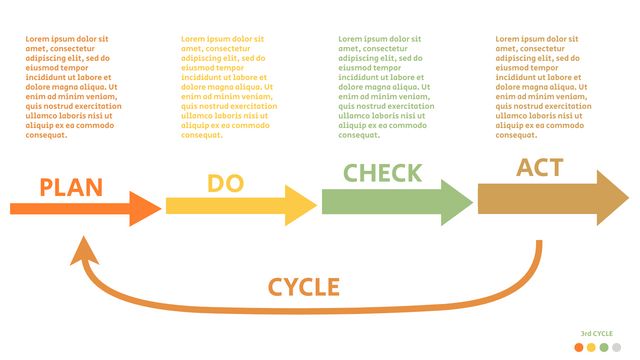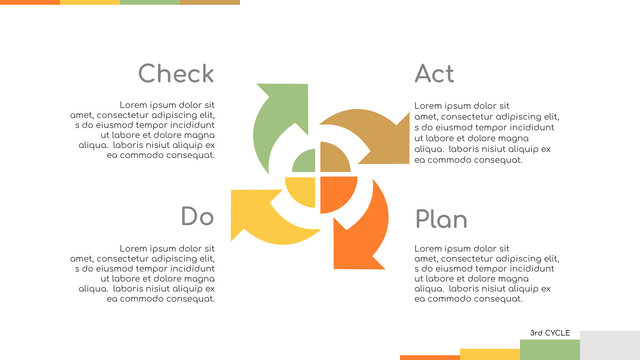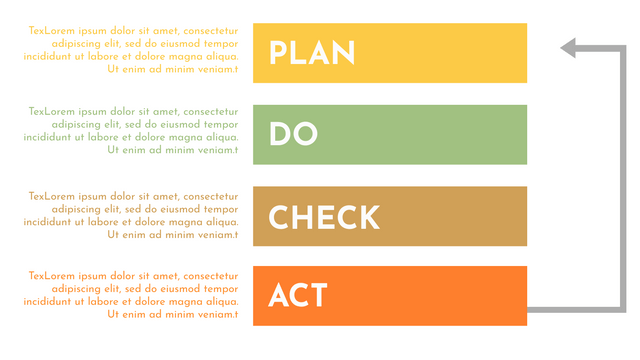In the 1950s, Dr. Williams-Edwards-Deming, a prominent management consultant, came up with the concept of the Deming cycle. He wants to create a framework to determine how a product or service meets customer needs, propose PDCA by creating a process that describes how a product or service meets customer needs, and introduce PDCA as a solution.
The Benefits of PDCA Lean Approach
promote continuous process improvement.
prevent recurring errors in the process.
prevent time from being wasted executing ineffective or poor solutions.
allow you to test possible solutions on a small scale and in a controlled environment.
promote teamwork through brainstorming and problem-solving skills.
provide a standardized approach to continuous improvement that can be used by employees in any department to solve new problems.
help to overcome internal barriers, thus keeping costs low.
What is PDCA Cycle?
PDCA is an iterative, four-stage approach to problem-solving. It includes Plan, Do, Check, and Act. We can think of the basic structure of problem solving at each stage of the enterprise as the plan-do-check-act cycle. It helps us to consider various solutions to the challenge and validate them before applying them on a large scale. The PDCA approach can be seen in all types of business environments, including new product creation, project, change management, and supply chain management.
Plan: identify the root cause of the problem and then plan a change or test for improvement.
Do: make changes or tests, preferably on a small scale or on a small scale.
Check: check whether the expected results have been achieved, whether errors have occurred, and what has been learned.
Act: if the expected results are achieved, adopt the changes. If the result is not ideal, the knowledge obtained from the previous cycle is used to repeat the cycle.
